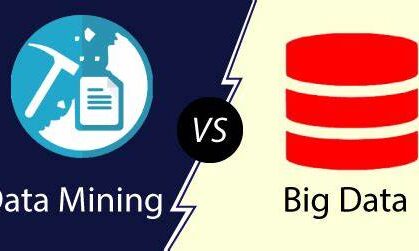In an era defined by the vastness of data, big data mining has emerged as a crucial process for extracting valuable insights from large datasets. Organizations across various sectors are leveraging big data mining techniques to drive decision-making, enhance customer experiences, and optimize operations. This article will explore the fundamental aspects of big data mining, its methodologies, applications, and current trends shaping the field.
What is Big Data Mining?
Big data mining refers to the process of analyzing and extracting useful information from large and complex datasets that traditional data processing software cannot handle efficiently. This process involves various techniques and tools designed to uncover patterns, correlations, and trends in massive datasets.
Why is Big Data Mining Important?
- Enhanced Decision-Making: Organizations can base decisions on comprehensive data analysis rather than intuition.
- Competitive Advantage: Companies using big data mining can identify market trends and customer preferences, staying ahead of competitors.
- Cost Efficiency: By analyzing operational data, businesses can identify areas for cost reduction and process improvement.
- Improved Customer Insights: Understanding customer behavior enables personalized marketing and service offerings.
Key Techniques in Big Data Mining
Data Warehousing
Data warehousing involves collecting and managing data from various sources, making it easier to perform analysis. A well-structured data warehouse enables efficient querying and reporting.
Example
Companies use data warehousing to store historical sales data, allowing for trend analysis over time.
Machine Learning
Machine learning algorithms can analyze large datasets, identifying patterns and making predictions. These algorithms learn from the data, improving their accuracy over time.
Example
In fraud detection, machine learning models analyze transaction data to identify suspicious activity based on historical patterns.
Data Mining Algorithms
Several algorithms are specifically designed for big data mining, including:
- Decision Trees: Useful for classification tasks, these algorithms model decisions and their possible consequences.
- Neural Networks: Employed for complex pattern recognition tasks, especially in unstructured data like images and text.
Natural Language Processing (NLP)
NLP techniques enable the analysis of textual data from social media, customer feedback, and reviews. By extracting sentiment and intent, businesses can gain valuable insights.
Example
Companies analyze customer reviews to understand overall satisfaction and identify areas for improvement.
Data Visualization
Data visualization tools help present large datasets in an easily understandable format, allowing stakeholders to grasp insights quickly.
Example
Dashboards that visualize sales data can help managers monitor performance in real-time.
Applications of Big Data Mining
Healthcare
In healthcare, big data mining is used to analyze patient data, predict disease outbreaks, and improve treatment plans. By examining vast amounts of data, healthcare providers can enhance patient outcomes.
Financial Services
Financial institutions utilize big data mining to assess credit risk, detect fraud, and personalize customer offerings. Analyzing transaction patterns allows banks to mitigate risks effectively.
Retail
Retailers leverage big data mining to optimize inventory management, enhance customer targeting, and improve supply chain efficiency. Analyzing purchasing patterns helps in understanding customer preferences.
Telecommunications
Telecom companies use big data mining to analyze call records, detect churn, and enhance customer service. By understanding user behavior, they can tailor service offerings.
Manufacturing
In manufacturing, big data mining aids in predictive maintenance and quality control. Analyzing production data can help identify equipment failures before they occur.
Current Trends in Big Data Mining
Cloud Computing
The rise of cloud computing has made it easier for organizations to store and analyze big data. Cloud platforms provide scalable resources, allowing businesses to handle large datasets without significant infrastructure investment.
Artificial Intelligence Integration
AI is becoming increasingly integrated with big data mining techniques, enabling more advanced analytics. AI algorithms can process data faster and more accurately, providing deeper insights.
Real-Time Analytics
The ability to analyze data in real time is a growing trend. Organizations seek tools that enable them to make immediate decisions based on current data, enhancing responsiveness.
Data Privacy Regulations
As concerns over data privacy increase, organizations must navigate regulations such as GDPR and CCPA while mining big data. Ensuring compliance while extracting insights is a critical challenge.
Advanced Data Analytics
There is a growing emphasis on advanced analytics techniques, such as predictive and prescriptive analytics. These approaches not only analyze past data but also forecast future trends and recommend actions.
Challenges in Big Data Mining
While big data mining offers numerous advantages, it also presents challenges:
Data Quality
The success of big data mining hinges on the quality of the data. Incomplete, inconsistent, or inaccurate data can lead to erroneous conclusions.
Scalability Issues
As datasets grow, traditional data mining methods may struggle to scale. Organizations must invest in robust technologies to handle large volumes of data efficiently.
Skill Gap
There is a significant shortage of skilled data scientists and analysts. Organizations often face challenges in finding qualified personnel to implement big data mining projects effectively.
Security Concerns
With large amounts of sensitive data being processed, ensuring data security is paramount. Organizations must implement robust security measures to protect against data breaches.
Ethical Considerations
Ethical concerns related to data usage and privacy are increasingly important. Organizations must navigate these issues while leveraging data mining techniques.
Conclusion
Big data mining is transforming how organizations analyze and utilize data to drive business success. By understanding the various techniques, applications, and current trends, businesses can harness the power of big data to gain valuable insights and maintain a competitive edge. As technology continues to evolve, addressing challenges and embracing advancements will be crucial for organizations seeking to unlock the full potential of big data mining.
For further insights into big data mining and analytics, visit IBM Big Data & Analytics Hub, a resource dedicated to the latest trends and technologies in this field.




